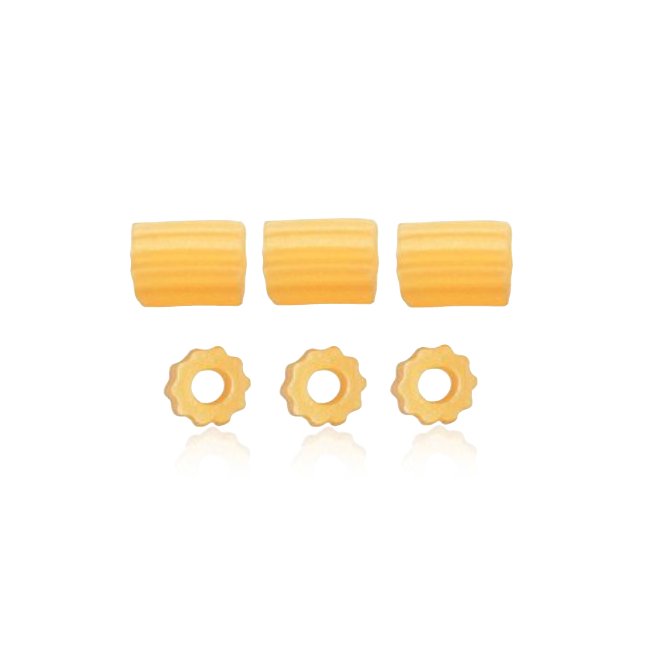
Characteristics, History and Pairings
Ditalini pasta has ancient origins and is one of the shortest straight-cut types of pasta. The name derives from the Italian word for “thimble” that inspired its shape. Over the years, many new variations have been created in different in sizes (ditali, larger, and ditaloni, a lot larger) and in different surfaces. All variants now come with a smooth and a grooved surface, however originally ditalini pasta was grooved.
Cooking Time
9 minutes.
Region of Origin
Ditalini pasta’s ancient origins are difficult to date, however, we known that this shape of pasta comes from Campania.
Best Pairings
Traditionally, Neapolitan dishes such as pasta with beans and with peas, including some pasta with tomato sauce, are made with ditalini. As a rule of thumb, ditalini pasta is perfect as an addition to pulse and vegetable soups, stews, and cream soups.
Ingredients
Durum wheat semolina and water.
Average nutritional values for 100 g of raw product
– Energy: 1508 kJ / 356 Kcal
– Fat: 1.5 g
– of which saturates: 0.4 g
– Carbohydrate: 72 g
– of which sugars: 3.0 g
– Fibre: 3.0 g
– Protein: 12 g
– Salt: < 0.01 g
Cooking Tips
Do you cook pasta in a sustainable way? Here are a few tips that can make a difference.
1. Don’t waste water, use only the necessary amount: 1 litre of water for every 100 grammes of dry pasta.
2. Cooking with a lid will save time and gas or electricity and the water will boil sooner.
3. Add the salt when the water starts boiling and add the pasta immediately after.
4. Put the lid back on halfway through the cooking time, switch off the gas (or electric hob) and finish cooking your pasta in the hot water inside the covered pot.